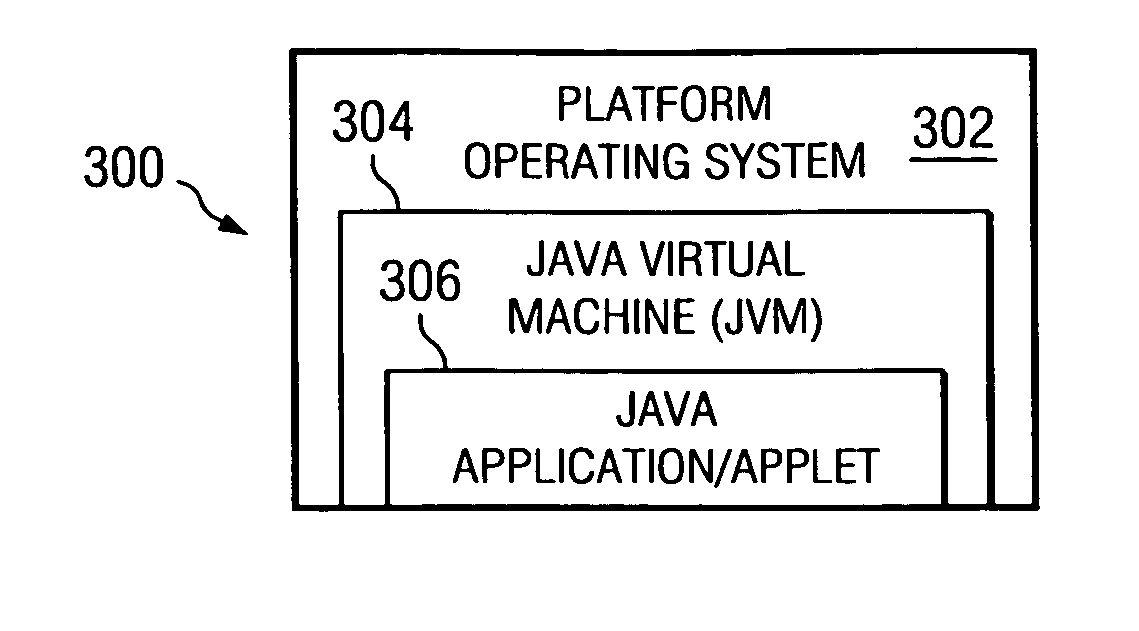Method and apparatus for determining leaks in a Java heap
a heap and leak detection technology, applied in the field of data processing system, can solve problems such as usurpation of memory, memory leakage, memory leakage,
- Summary
- Abstract
- Description
- Claims
- Application Information
AI Technical Summary
Benefits of technology
Problems solved by technology
Method used
Image
Examples
Embodiment Construction
[0021] With reference now to the figures and in particular with reference to FIG. 1, a pictorial representation of a data processing system in which the present invention may be implemented is depicted in accordance with a preferred embodiment of the present invention. A computer 100 is depicted which includes system unit 102, video display terminal 104, keyboard 106, storage devices 108 such as floppy drives and other types of permanent and removable storage media, and mouse 110. Additional input devices may be included with personal computer 100, such as, for example, a joystick, touchpad, touch screen, trackball, microphone, and the like. Computer 100 can be implemented using any suitable computer, such as an IBM eServer computer or IntelliStation computer, which are products of International Business Machines Corporation, located in Armonk, N.Y. Although the depicted representation shows a computer, other embodiments of the present invention may be implemented in other types of ...
PUM
 Login to View More
Login to View More Abstract
Description
Claims
Application Information
 Login to View More
Login to View More - R&D
- Intellectual Property
- Life Sciences
- Materials
- Tech Scout
- Unparalleled Data Quality
- Higher Quality Content
- 60% Fewer Hallucinations
Browse by: Latest US Patents, China's latest patents, Technical Efficacy Thesaurus, Application Domain, Technology Topic, Popular Technical Reports.
© 2025 PatSnap. All rights reserved.Legal|Privacy policy|Modern Slavery Act Transparency Statement|Sitemap|About US| Contact US: help@patsnap.com



